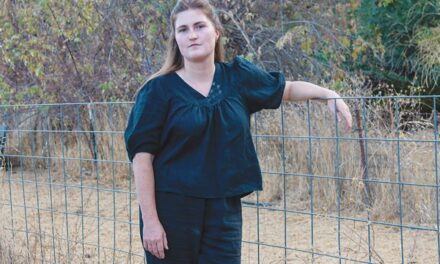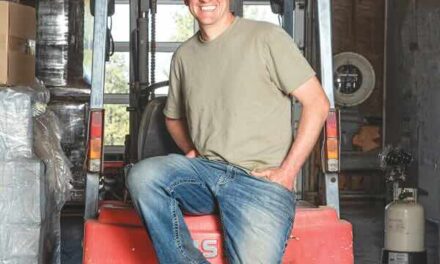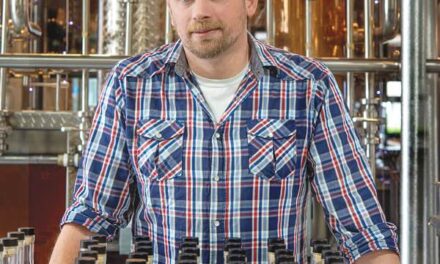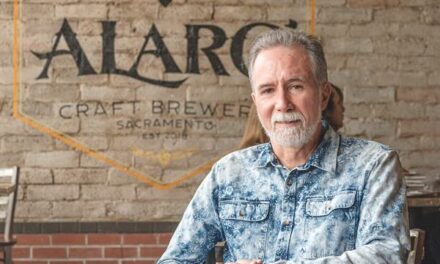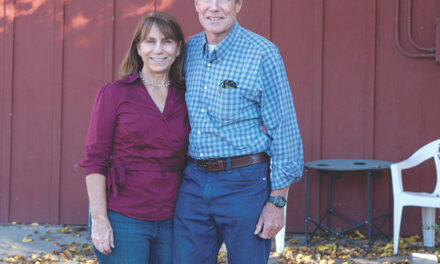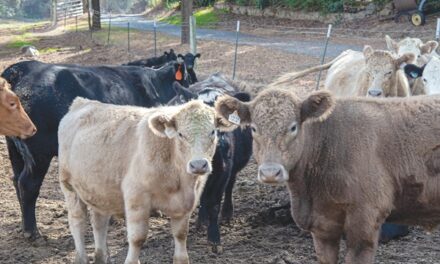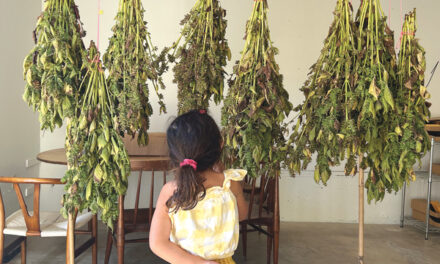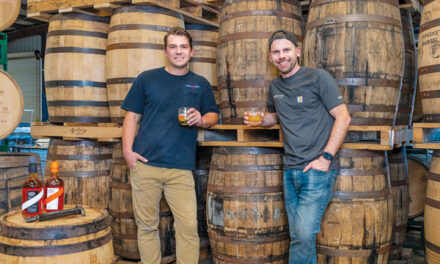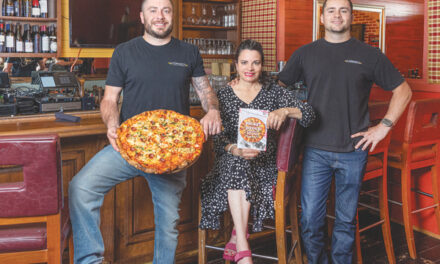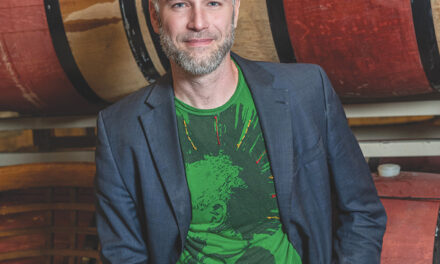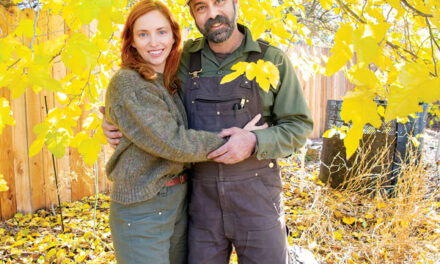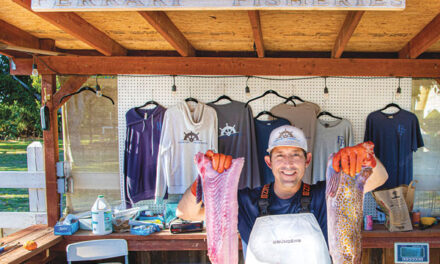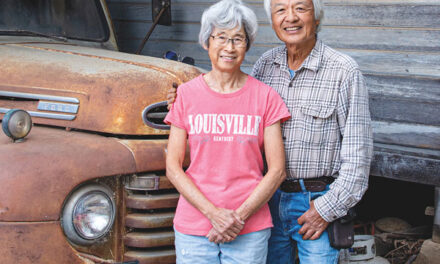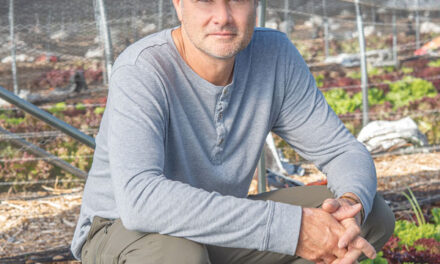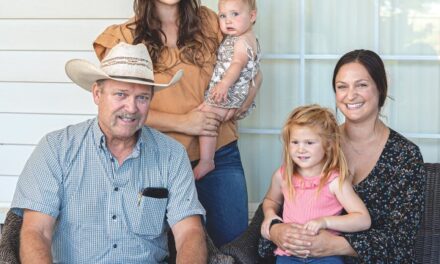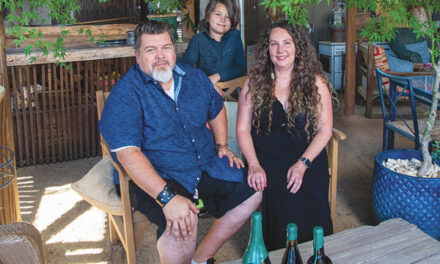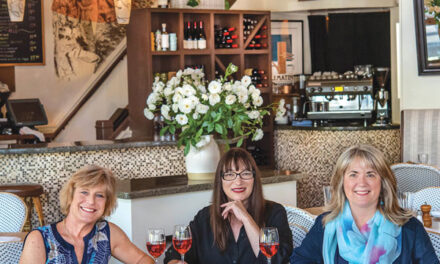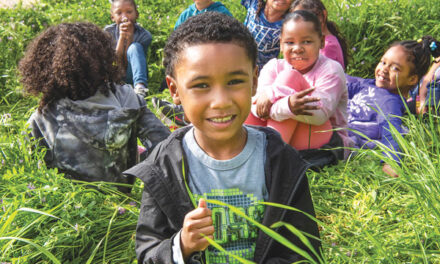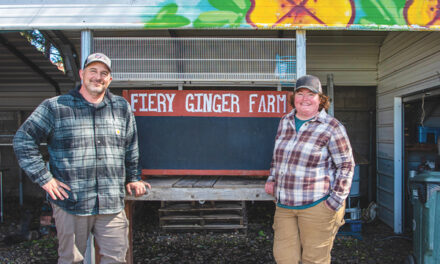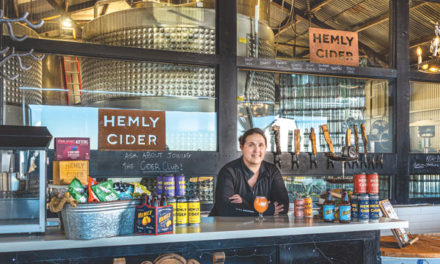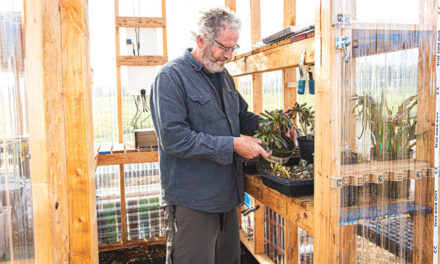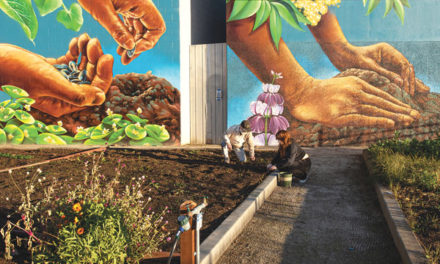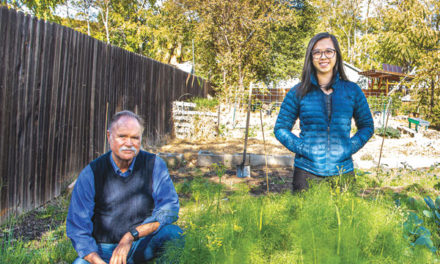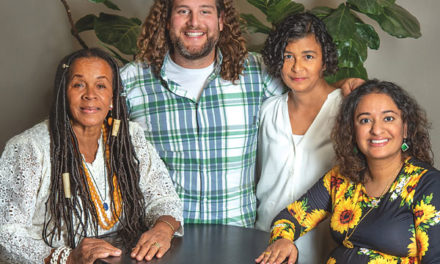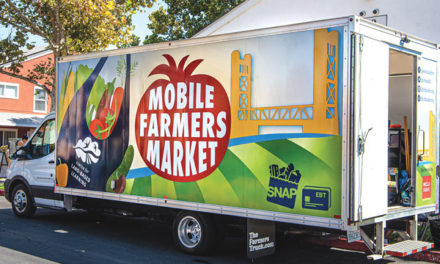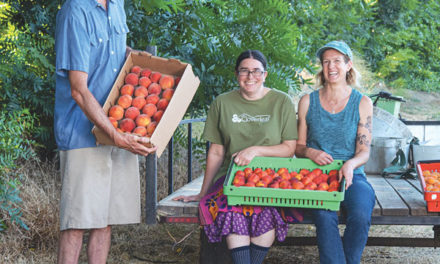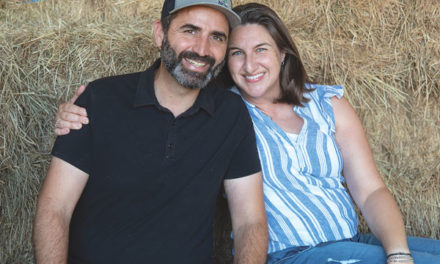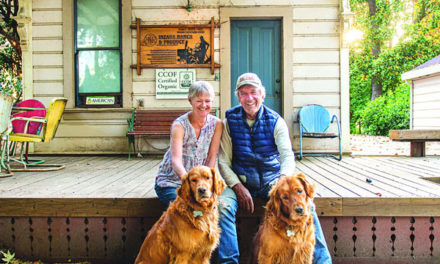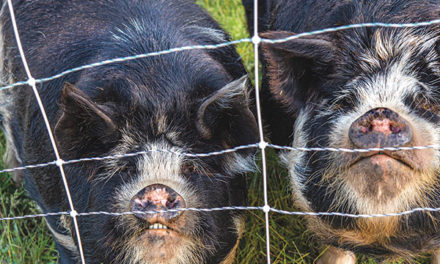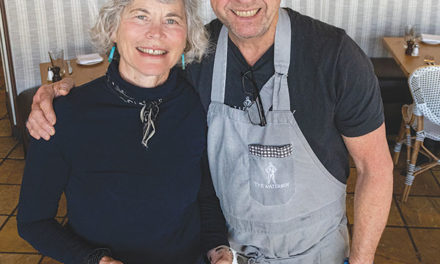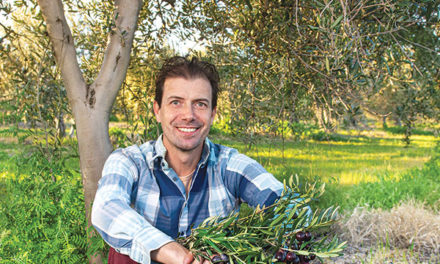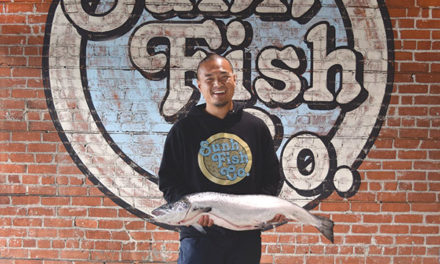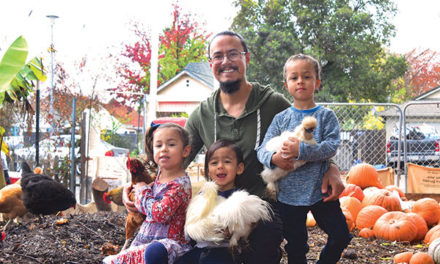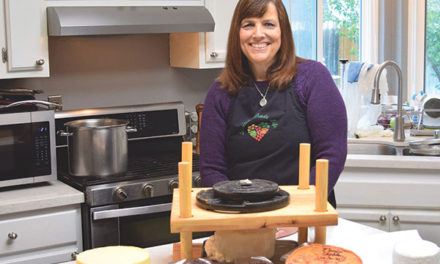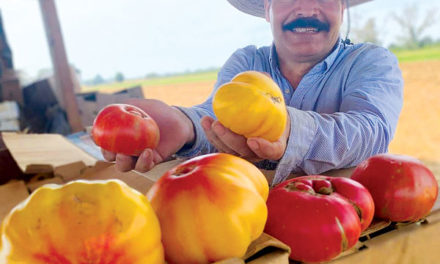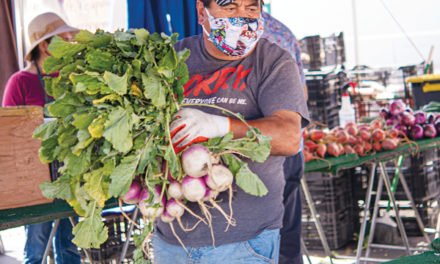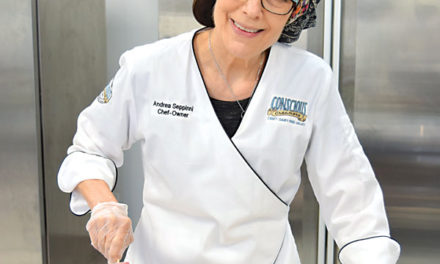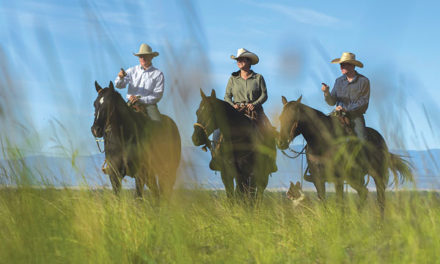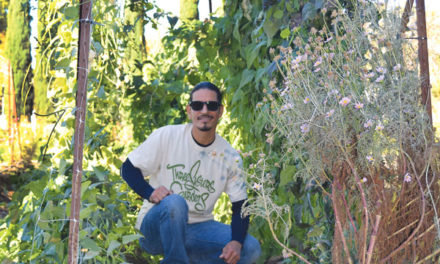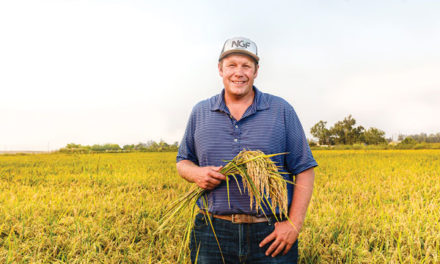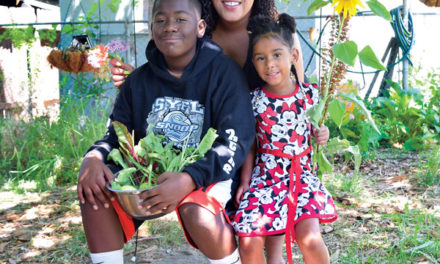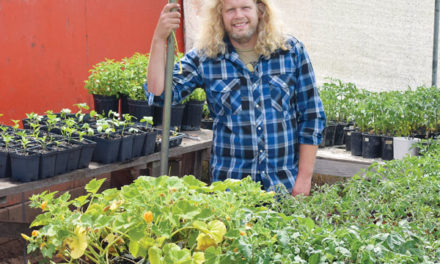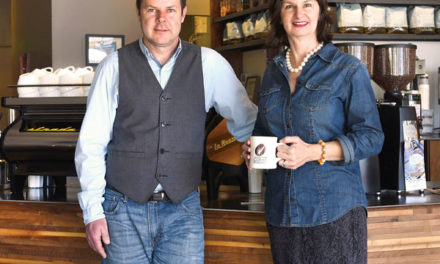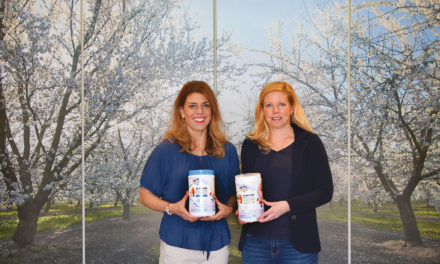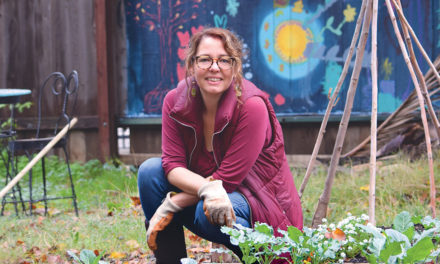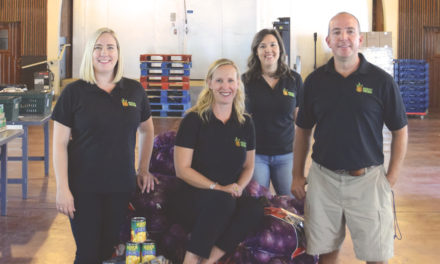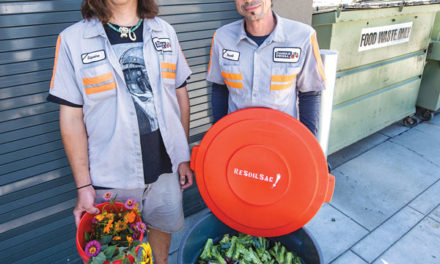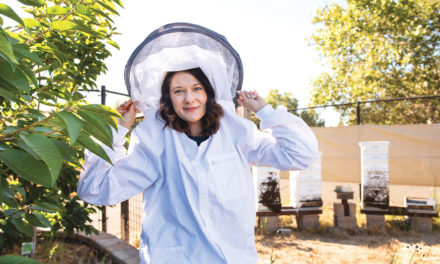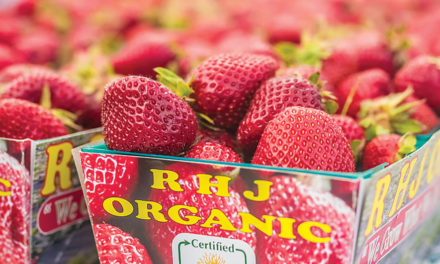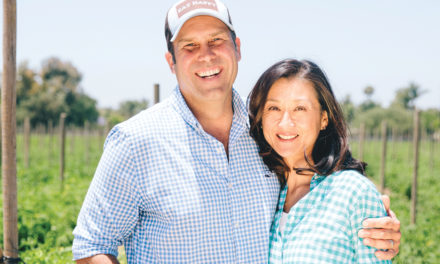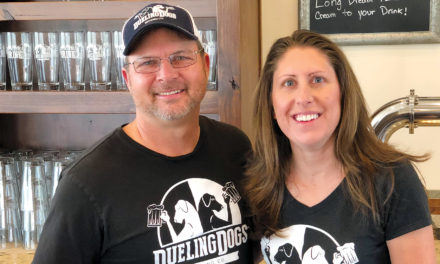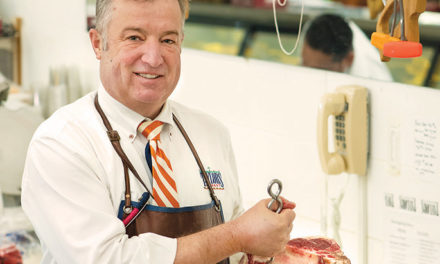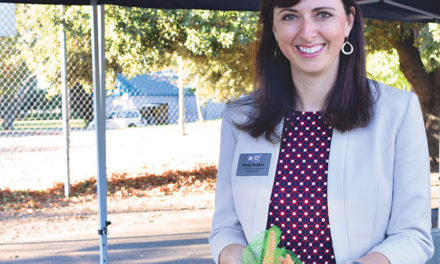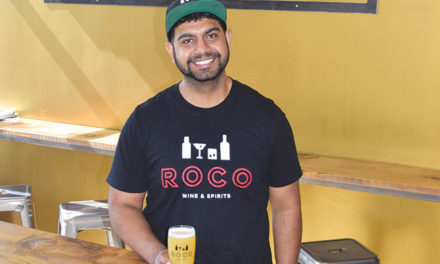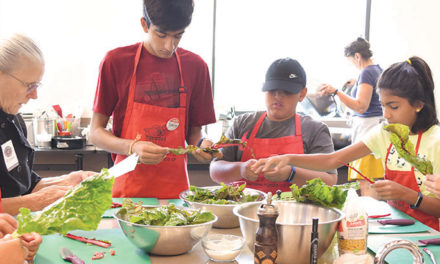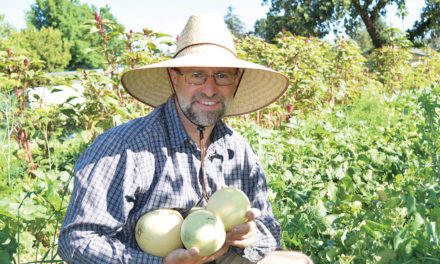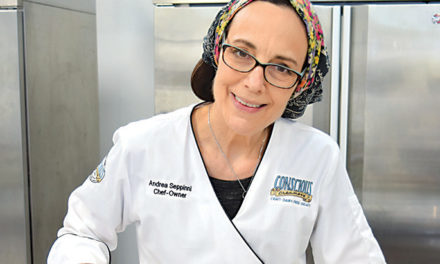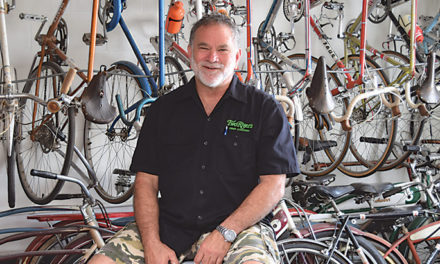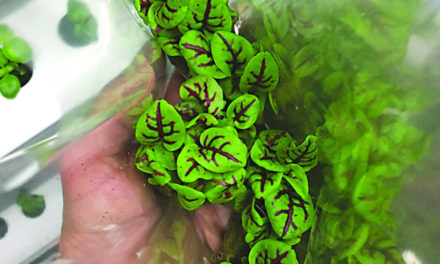Donate Here!
Sacramento Food Bank Works to Fight Food Insecurity
By Angela Knight
November 2018
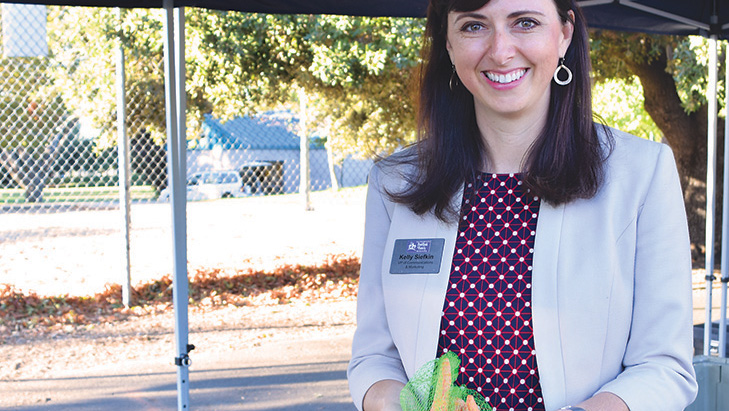
Let me introduce you to Kelly Siefkin. She’s vice president of communications and marketing for Sacramento Food Bank & Family Services. She talks fast, and is quick with numbers and statistics, so I’m struggling to keep up. Today, she’s wearing a green-patterned dress with green earrings and black flats, and carrying her cell phone. We’re touring the food bank campus on Bell Avenue—110,000 square feet on 12 acres. It’s a big facility, but the food bank feeds a lot of hungry people in and around the farm-to-fork capital.
Here, you can see your donations and food bank volunteers at work. In the first warehouse, the “Wall of Pride” draws attention to the companies whose employees have volunteered their time. Below the wall, fans move the air while a crew packs distribution boxes for seniors. Colorful trucks (there’s a fleet of 10) are parked at the loading docks.
On the side of one truck it says that one in five people in Sacramento County suffer from food insecurity. What does that mean? In short, there are a lot of people, including children and seniors, who do not know where their next meal will come from—an estimated 230,000 people in the county fall into that gap, Siefkin says. The food bank supplies food to 157,000 people every month. Ponder those numbers while we continue the tour.
Another warehouse contains pallets of canned and boxed food stored on racks. Local watermelons and cabbages fill bins and boxes. Adzuki beans and rice are stored in large bags. In the last warehouse, more volunteers check sell-by dates and sort donations into categories. Siefkin calls it “reverse grocery shopping.” Empty bins that say “Donate Here!” wait to be filled.
The food bank purchases a lot of the food it distributes. The cans don’t have dents and the packaging looks like what you would find in a grocery store. It also receives USDA food commodities with their official-looking labels. Donations come from the community, including restaurants and local farms, like Durst Organic Growers (those watermelons, for example), David J. Elliot & Son, Greene & Hemly, Goldbud Farms and Vierra Farms, and corporations.
Siefkin was excited about the refrigerators, racks and pallet jacks that would be arriving the following day. They will be distributed to the food bank’s partner agencies—there are 220 organizations in the area—everything from churches to food pantries. Smaller agencies sometimes lack equipment and proper storage facilities, but they are the first defense in the war against hunger.
Despite the positive news about the economy and low unemployment, Siefkin says the number of working poor and underemployed people in Sacramento is increasing. Many people are forced to work two jobs with zero benefits. Without pay increases to cover rising rents, families can’t afford to pay for housing and buy food. “Sacramento is an incredibly expensive place to live,” she says. While it’s not the Bay Area, gas prices and rent are high.
Siefkin says, “[Most] people don’t have a clue where their food comes from,” so part of the food bank’s job is to educate people. Clients often don’t know how to cook items, like adzuki beans or rice, from scratch, so the food bank hands out recipe cards. “Fear of [different] food is real,” she says, and it is passed down from parents to their children.
Here’s one of the many programs that caught my attention. Produce for All distributes fresh produce on a monthly schedule at various locations. Working with its partner agencies, the food bank chooses neighborhood sites—schools and health clinics, for example—because people need to be able to get there (and carry their food home) without having to take a bus or drive a car. You can use the online “food finder” tool to find distribution sites. Produce for All distributed 506,884 pounds of food in the last fiscal year, Siefkin says, and it is on track to do the same this year.
Can anyone show up and receive free food? The answer is yes. “We’re here to serve and be judgment free,” Siefkin says. “Food is often the entry point,” for families, but they can also access other services: nutrition, technology, life skills and English classes, as well as clothing distribution and more.
For more information or to sign up to volunteer or make a donation, go to sacramentofoodbank.org.
Angela Knight can be reached at knight@mcn.org




